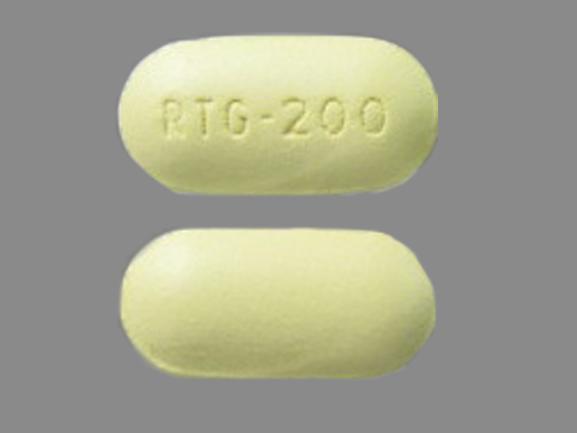Potiga Dosage
Generic name: EZOGABINE 50mg
Dosage form: tablet, film coated
Drug class: Neuronal potassium channel openers
Medically reviewed by Drugs.com. Last updated on May 10, 2024.
Dosing Information
The initial dosage should be 100 mg 3 times daily (300 mg per day). The dosage should be increased gradually at weekly intervals by no more than 50 mg 3 times daily (increase in the daily dose of no more than 150 mg per day) up to a maintenance dosage of 200 mg to 400 mg 3 times daily (600 mg to 1,200 mg per day), based on individual patient response and tolerability. This information is summarized in Table 1 under Dosing in Specific Populations. In the controlled clinical trials, 400 mg 3 times daily showed limited evidence of additional improvement in seizure reduction, but an increase in adverse events and discontinuations, compared with the 300 mg 3 times daily dosage. The safety and efficacy of dosages greater than 400 mg 3 times daily (1,200 mg per day) have not been examined in controlled trials.
POTIGA should be given orally in 3 equally divided doses daily, with or without food.
POTIGA tablets should be swallowed whole.
If POTIGA is discontinued, the dosage should be gradually reduced over a period of at least 3 weeks, unless safety concerns require abrupt withdrawal.
Dosing Considerations to Mitigate the Risk of Visual Adverse Reactions
Because POTIGA may cause retinal abnormalities with long-term use, patients who fail to show substantial clinical benefit after adequate titration should be discontinued from POTIGA. Testing of visual function should be done at baseline and every 6 months during therapy with POTIGA. Patients who cannot be monitored should usually not be treated with POTIGA. If retinal pigmentary abnormalities or vision changes are detected, POTIGA should be discontinued unless no other suitable treatment options are available and the benefits of treatment outweigh the potential risk of vision loss [see Warnings and Precautions (5.1)].
Dosing in Specific Populations
No adjustment in dosage is recommended in patients with mild renal or hepatic impairment (see Table 1). Dosage adjustment is recommended in geriatric and patients with moderate or severe renal or hepatic impairment (see Table 1).
Table 1. Dosing in Specific Populations
|
Specific Population |
Initial Dose |
Titration |
Maximum Dosage |
|
General Dosing |
|||
|
General population (including patients with mild renal or hepatic impairment) |
100 mg 3 times daily (300 mg per day) |
Increase by no more than 50 mg 3 times daily, at weekly intervals |
400 mg 3 times daily (1,200 mg per day) |
|
Dosing in Specific Populations |
|||
|
Geriatrics (patients ≥65 years) |
50 mg 3 times daily (150 mg per day) |
Increase by no more than 50 mg 3 times daily, at weekly intervals |
250 mg 3 times daily (750 mg per day) |
|
Hepatic impairment (patients with Child-Pugh 7-9) |
250 mg 3 times daily (750 mg per day) |
||
|
Hepatic impairment (patients with Child-Pugh >9) |
200 mg 3 times daily (600 mg per day) |
||
|
Renal impairment (patients with CrCL <50 mL per min or end-stage renal disease on hemodialysisa) |
200 mg 3 times daily (600 mg per day) |
||
aImmediately following hemodialysis a single supplemental dose is recommended. If breakthrough seizures occur toward the end of hemodialysis, an additional supplemental dose may be considered at the start of subsequent dialysis sessions [see Clinical Pharmacology (12.3)].
More about Potiga (ezogabine)
- Check interactions
- Compare alternatives
- Drug images
- Side effects
- During pregnancy
- FDA approval history
- Drug class: neuronal potassium channel openers
- Breastfeeding
Patient resources
Professional resources
Related treatment guides
Further information
Always consult your healthcare provider to ensure the information displayed on this page applies to your personal circumstances.


